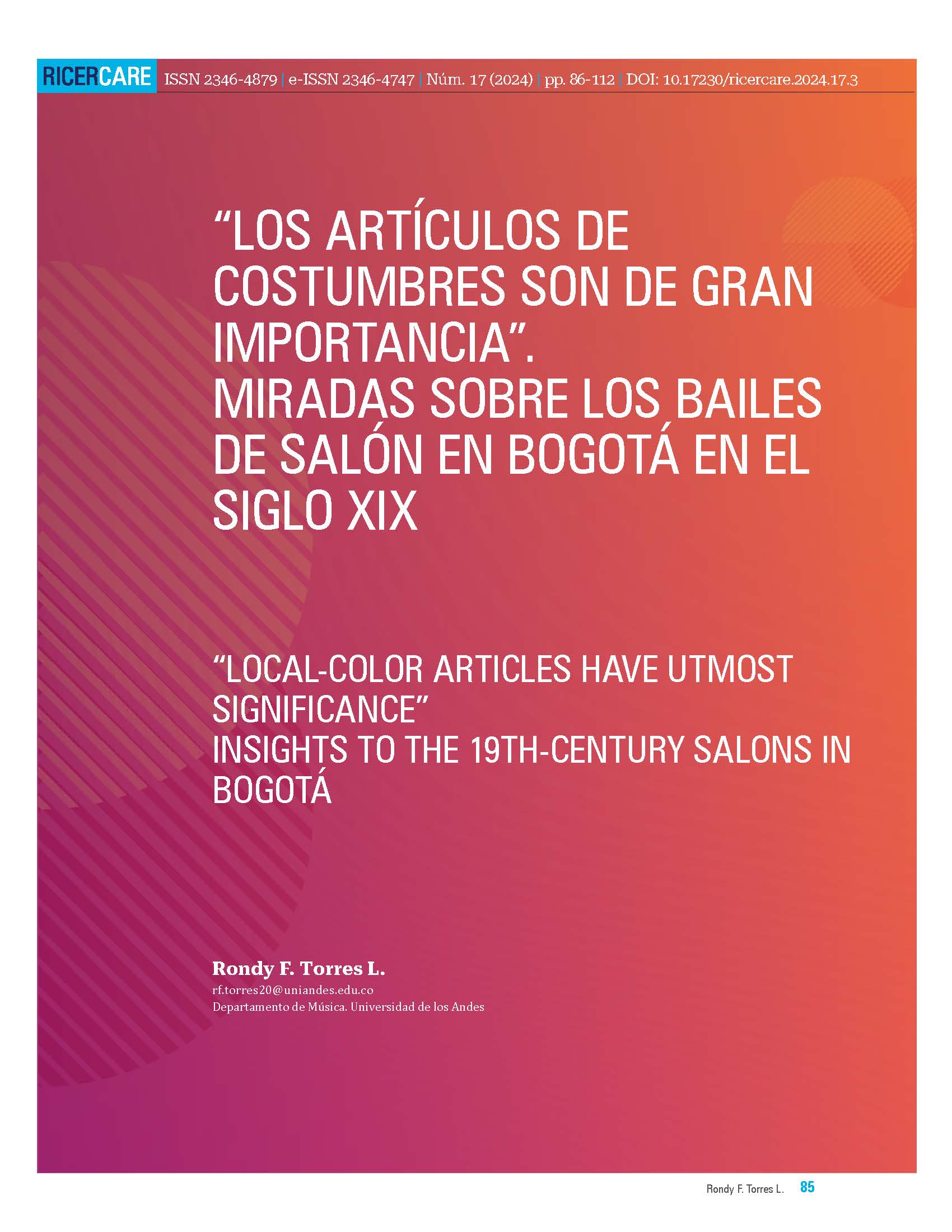“Local-color articles have utmost significance” Insights to the 19th-century salons in Bogotá
Main Article Content
Keywords
Costumbrismo, salon music, ballroom dances, musical chronicle, 19th century music
Abstract
This article analyzes “Quejas al Mono de la Pila” (1859) and “El duende en un baile” (1846), two local-color texts by Juan Crisóstomo Osorio Ricaurte (1836-1887) and José Caicedo Rojas (1816-1898). Both works depict situations that contradict hegemonic notions of social distinction and elegance associated with ballroom dances, as commonly represented in musicological studies in 19th-century Colombia. Narrated from a first-person perspective, the authors describe and denounce a series of transgressions to what they understood as good manners. Ultimately, this analysis suggests that local-color literature offers a proto-ethnology that complements information available on travel accounts and iconography. Therefore, these works can extend the scope of sources and information about the diverse spaces that music opened in the 19th century, a diversity often neglected by Colombia's official narrative of music history.

